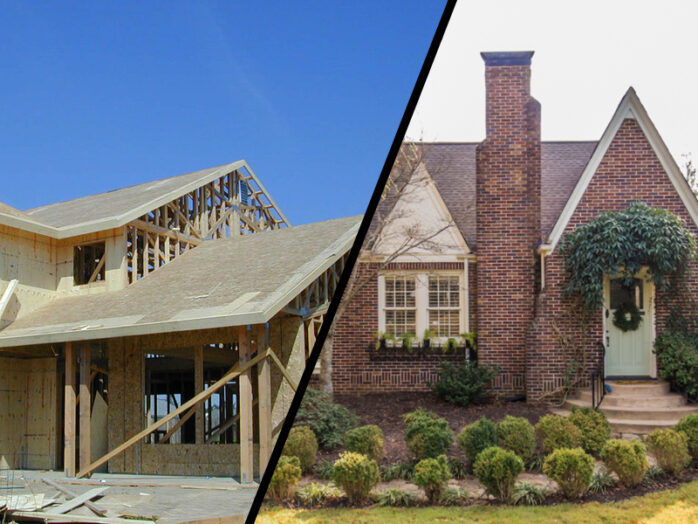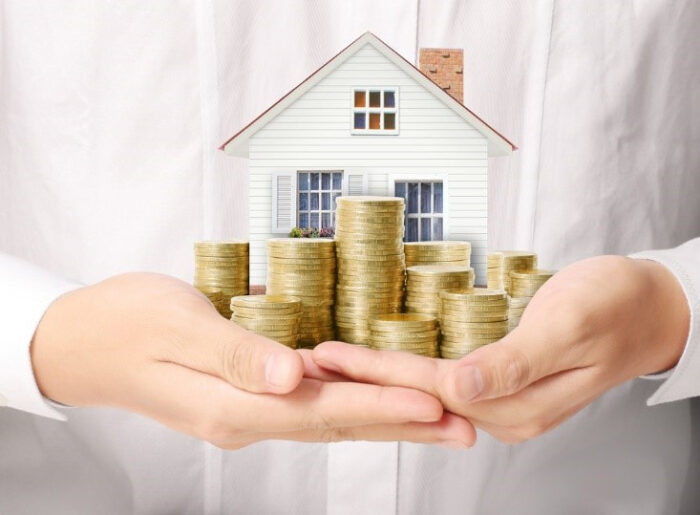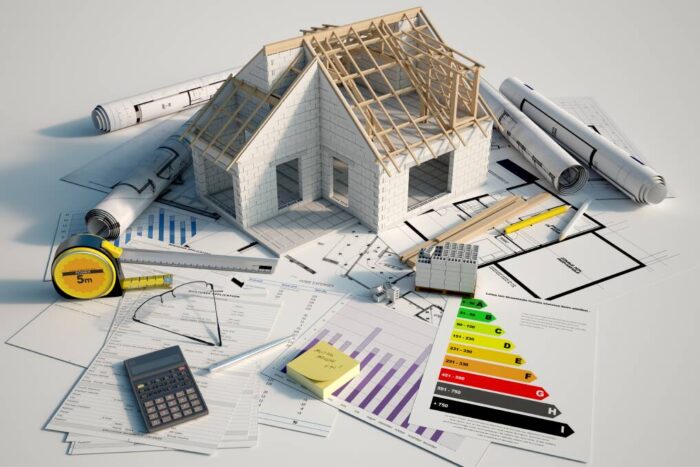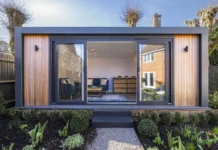
Buying a property is one of the biggest financial choices in a person’s life. However, you must carefully examine, research, and plan to make careful choices that match your financial goals and circumstances.
Buying an existing house or constructing a new one is an age-old dilemma because both choices have their fair share of pros and cons.
Individual priorities, budgetary constraints, and personal preferences determine if you’ll choose new developments or purchase an existing one.
Key Takeaways:
- New developments provide fully personalized, semi-custom, standard houses for different preferences and budgets.
- Older homes may need upgrades to meet modern standards, which increases utility and maintenance costs.
- When choosing between new and existing homes, consider pricing, customization, condition, maintenance, community, and resale value. Your timetable, budget, personal tastes, and long-term goals should also influence your decision.

New Developments – Types and Advantages
| Type | Details | Benefits |
| Production homes | Constructed in suburban and rural areas. Builders purchase large plots of land, divide them into lots, and allow buyers to select their preferred lot based on their needs and budget. Buyers can choose from various floor plans, exterior designs, and building materials to customize their homes. | Economical for first-time homebuyers because of their streamlined construction and transparency in pricing. |
| Fully-custom homes | Created to fit the homeowner’s vision, budget, and direction. They involve hiring an architect and builder to design a floor plan and ensure structural integrity. These homes are the most expensive option on the market. | Ideal for homebuyers who prefer a more hands-on approach to construction. Everything is customizable to your preferences and needs, so buyers have complete control. |
| Semi-custom homes | Blend features of both production and custom homes. They offer more design flexibility than production homes but less than custom homes. Buyers can make minor blueprint adjustments, such as lighting fixtures, flooring, appliances, and energy-efficient systems. | No hassle of hiring an architect, getting approvals, and waiting nearly a year to move in. |
| Spec homes | Builders construct move-in-ready homes with predetermined floor plans, finishes, and landscaping to attract buyers quickly. Spec homes are built on single lots in established communities rather than buyer-divided land. | For the hands-off type who wants to be a first-time homebuyer. Perfect for people who want to move in immediately. |
Things to Know Before Choosing New Development Homes
-
Modern Style
New homes have modern architecture and design. Their features may include open floor designs, energy-efficient appliances, smart home technologies, and high-end finishes.
-
Options for Customization
Buyers can personalize flooring, cabinetry, paint colours, and fittings with many developers. Homeowners can customize their living environment to fit their lifestyle.
-
Warranty Coverage
Builders or developers usually provide warranties on new homes. These guarantees may cover structural faults, mechanical systems, and workmanship for a certain time, which gives buyers peace of mind and protection from unforeseen repair costs.
-
Energy Savings
New development homes use energy-efficient materials and building methods for energy efficiency and lower utility bills. Energy-efficient HVAC systems, double-pane windows, and high-performance insulation minimize energy expenses and environmental impact.
-
Community Benefits
Incorporate parks, playgrounds, walking routes, fitness centres, and pools. These shared facilities improve people’s quality of life and provide neighbourhood socialization and enjoyment.
-
Location Options
Occur in many settings, such as master-planned communities, urban infill regions, or suburban subdivisions. Buyers can choose a location near schools, retail, employment centres, transportation, and other amenities.
-
Price and Affordability
New development homes may cost more than nearby homes. Still, they offer good value for purchasers wanting modern amenities, energy efficiency, and the peace of mind of owning a new property. Developers may also offer incentives or funding to make homeownership more affordable.

Pros of Buying an Existing Home
Well-Established Community
Neighbourhoods that have been around for a while usually have established homes, mature trees, landscaping, and community facilities.
Ready for Quick Occupancy
There’s no need to wait for new construction to finish before you can move into the house once the purchase is finalized.
Reduced Expenses
Since the land and infrastructure costs are already factored into the overall pricing, existing homes tend to be priced lower than newly built residences.
Personality and Allure
Homebuyers with an eye for history and quality craftsmanship may be interested in purchasing an older property for its character, charm, and unusual architectural elements.
Space for Negotiations
If the house has been listed for a time, the seller might be more open to negotiating a price.
Cons of Buying Existing Homes
- May need additional care and remodelling to meet modern standards.
- Constructing a new home with desired features may allow more personalization than buying an existing property.
- Plumbing, electricity, and appliances in older homes may need to be updated for safety and efficiency.
- May be less energy-efficient, which raises utility expenditures. Upgrades to insulation, windows, and HVAC are expensive.
- Popular neighbourhoods might have a competitive market and bidding wars for existing homes.
- May not have warranties, so you may be responsible for any concerns that develop after purchase.

Financing Options – New Construction vs. Existing Homes
When financing a new construction or buying an existing home, here are the simplified options:
New Construction Financing
| Financing Type | Details |
| Construction Loans | Short-term, converts to mortgage after build |
| Builder Financing | Direct from builders, possibly higher rates |
| Lot or Land Loans | For land purchase, requires large down payment |
| Government Loans | programs for construction |
Buying a Home Financing
| Financing Option | Key Details |
| Conventional Mortgage | Requires ≥20% down payment; no mortgage insurance needed. |
| High-Ratio Mortgage | Down payment as low as 5%; needs mortgage insurance. |
| HELOC | Secured by home equity; up to 65% of home’s value. |
| Fixed-Rate Mortgage | Interest rate stays the same throughout the term. |
| Variable-Rate Mortgage | Interest rate fluctuates with the market. |
| Portable Mortgage | Transfer existing mortgage to a new property. |
| Assumable Mortgage | Buyer takes over seller’s mortgage terms and rate. |
| Cash Purchase | Buy home outright without financing. |
New Home: Buying Or Building
There are many things to consider when deciding between buying an existing house and building one from scratch. These include your timetable, money, personal preferences, and the real estate market. There are benefits and downsides to both choices.
Your situation, priorities, and long-term objectives should be considered while deciding between building and purchasing. If you need an entire renovation or just a few small updates, many construction companies can assist you in achieving your dream house.
Frequently Asked Questions
How can I evaluate the area’s growth potential when choosing between building and buying?
Research local zoning rules, land use plans, and development projects to predict growth and property value. Consider population growth, job possibilities, infrastructural upgrades, and planned developments when comparing new and existing homes for long-term investment.
How long does it take to build a new home versus buying an existing one?
Building a new home usually takes over a year, considering time for design, securing financing, and construction, which alone can last 6 to 18 months. On the other hand, buying an existing home can be much quicker, potentially taking only a few months from beginning the search to moving in. This includes the time to find a home, make an offer, and complete the purchase process, which typically ranges from 30 to 60 days if you’re financing the purchase.
How do property taxes compare between new and existing homes?
Property taxes for new homes can be higher because they are assessed at current market values, including the land and the new structure. Existing homes might have lower taxes if their assessments are outdated or the market has stayed the same.








